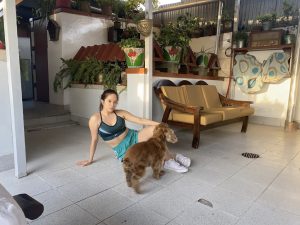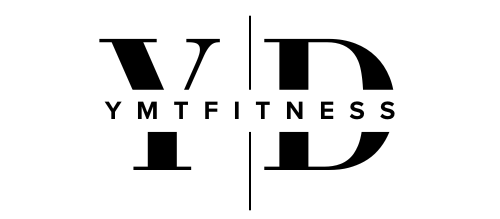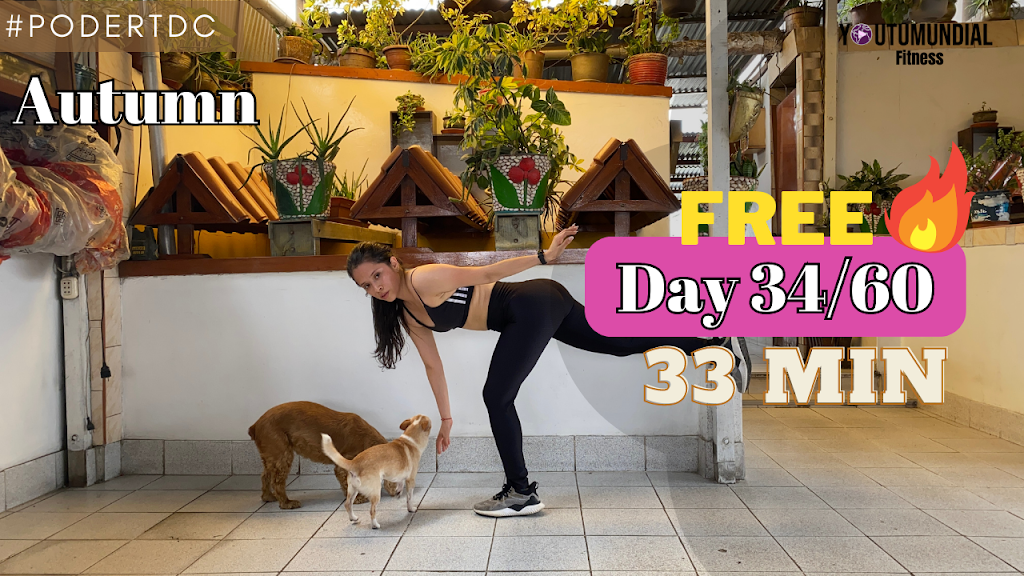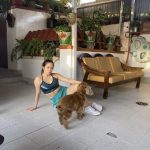Building a strong core doesn’t require a gym membership or fancy equipment. With the right approach, you can achieve noticeable results from the comfort of your living room. This guide is designed to help you strengthen your midsection quickly and efficiently, even with a busy schedule.
Whether you’re an early riser or prefer to unwind after work, these routines are tailored to fit seamlessly into your day. From bodyweight movements to simple free-weight exercises, you’ll find a variety of options to keep your training engaging and effective.
The goal is simple: develop a strong, stable core that supports your overall fitness. By following the structured routines in this guide, you’ll be on your way to achieving a toned midsection in no time.
Key Takeaways
- Core-strengthening routines can be done anywhere, including at home.
- Structured exercises are designed for busy schedules and minimal equipment.
- Training includes bodyweight and free-weight movements for variety.
- Focus on developing a strong, stable core quickly and efficiently.
- Convenient routines fit into any part of your day.
The Benefits of Exercising Your Core at Home
Strengthening your midsection from home offers more than just convenience—it’s a game-changer for your overall fitness. A strong core is essential for daily activities, from lifting groceries to maintaining good posture. By focusing on core exercises, you can improve stability, flexibility, and balance, all while reducing the risk of injury.
Improved Stability and Posture
One of the most significant benefits of core training is enhanced stability. A solid midsection supports your spine, helping you maintain proper alignment during movement. This reduces strain on your back and minimizes the risk of pain or injury. Studies show that consistent core exercises can significantly improve posture, especially for those who spend long hours sitting.
Proper form is crucial for maximizing these benefits. Fitness trainers emphasize the importance of maintaining the correct starting position in every exercise. For example, planks and bird-dogs are excellent for building stability while promoting good posture.
Enhanced Flexibility and Balance
Core exercises also contribute to better flexibility and balance. Movements like side planks and Russian twists engage multiple muscle groups, improving your range of motion. This is particularly beneficial for athletes or anyone looking to enhance their physical performance.
Even short, focused routines can make a difference. For instance, a 10-minute session of yoga-inspired core exercises can boost flexibility and reduce stiffness. These small efforts add up, leading to long-term improvements in your overall fitness.
Creating the Perfect Home Workout Environment
Transforming a small corner of your home into a workout zone is easier than you think. A dedicated space helps you stay focused and consistent, even in limited areas. Whether you live in a studio apartment or a house, a well-organized area can make your fitness routine more effective.
Designing a Dedicated Space
Start by choosing a spot that feels comfortable and free from distractions. Clear out any clutter and ensure you have enough room to move your legs and arms freely. A corner of your living room or bedroom often works well.
Use a yoga mat or a soft rug to define your workout area. This not only protects your floor but also mentally prepares you for exercise. Keep essential items like water, a towel, and resistance bands nearby to avoid interruptions.
Essential Equipment and Modifications
You don’t need expensive gear to strengthen your core. Household items like chairs, water bottles, or even a sturdy table can substitute for gym equipment. For example, use a chair for elevated leg raises or a water bottle as a light weight for arm exercises.
If space is tight, focus on exercises that require minimal movement, such as planks or seated twists. These modifications ensure you can still achieve a high-quality session without needing extra room.
“Consistency is key. A dedicated space helps you build a routine that sticks.”
Finally, stay motivated by setting small, achievable goals. Track your progress and celebrate milestones to keep yourself inspired. With the right environment and mindset, you’ll find it easier to stay committed to your fitness journey.
Fundamentals of a Strong Core
Mastering the basics of core strength starts with understanding proper form. A strong core isn’t just about visible muscles—it’s about stability, balance, and support for your entire body. Without the right technique, even the most intense exercises won’t deliver the results you’re aiming for.
Understanding Proper Form
Proper form is the cornerstone of effective core training. It ensures that the right muscles are engaged while minimizing strain on other areas. For example, during a plank, keeping your body in a straight line from head to heels activates your core without putting unnecessary pressure on your lower back.
Focus on controlled movements rather than speed. Slower, deliberate repetitions allow you to maintain alignment and maximize muscle engagement. This approach not only builds strength but also reduces the risk of injury.
Preventing Injury with Correct Technique
Incorrect form is one of the leading causes of exercise-related injuries. Common mistakes, like arching your back during crunches or letting your hips sag during planks, can lead to discomfort or long-term issues. Always prioritize quality over quantity—doing fewer reps with perfect form is far more effective than rushing through a set.
Here are a few tips to maintain proper posture:
– Keep your spine neutral during movements.
– Engage your core muscles throughout the exercise.
– Avoid holding your breath; breathe steadily and deeply.
By paying attention to these details, you’ll not only protect your body but also see faster progress in building a strong, stable core.
10-Minute Abs Workouts for Busy Schedules
Short on time? A 10-minute routine can still deliver powerful results for your midsection. Whether you’re squeezing in a session before work or during a lunch break, these quick exercises are designed to maximize efficiency without sacrificing effectiveness.

Bodyweight and HIIT Variations
Bodyweight exercises are perfect for quick routines. Start with a 30-second plank, focusing on keeping your body in a straight line. Follow this with 20 mountain climbers, ensuring your knee drives toward your chest with each movement. These exercises engage your core while keeping your heart rate up.
For a HIIT twist, alternate between 20 seconds of high-intensity movements like bicycle crunches and 10 seconds of rest. During bicycle crunches, emphasize the rotation of your torso and the extension of your left leg for maximum engagement. Repeat this cycle for 4 rounds to complete your 10-minute session.
Precision in Movement
Proper position is key to getting the most out of your time. For example, during Russian twists, sit with your knees bent and lean back slightly. Hold a water bottle or light weight, and twist side to side while keeping your core tight. This movement targets your obliques and improves rotational strength.
Another effective exercise is the leg raise. Lie on your back, extend your legs, and slowly lift them to a 90-degree angle. Lower them back down without letting them touch the floor. This exercise strengthens your lower core while improving control.
Fitting It Into Your Day
Even the busiest schedules can accommodate a 10-minute session. Try breaking it into two 5-minute segments—one in the morning and one in the evening. This approach keeps your metabolism active and ensures consistency.
For beginners, start with shorter intervals and fewer repetitions. Advanced athletes can increase intensity by adding weights or reducing rest time. The key is to adapt the routine to your fitness level while maintaining proper form.
“Consistency beats intensity. A short, focused routine done regularly will yield better results than sporadic, longer sessions.”
By incorporating these quick workouts into your daily routine, you’ll build a stronger core without disrupting your schedule. Remember, even small efforts add up over time.
Abs workout at Home: A Complete How-To Guide
Achieving a toned midsection from your living room is simpler than you might think. With the right approach, you can build a strong, stable core without stepping foot in a gym. This guide provides a step-by-step routine, along with essential warm-up and cool-down tips, to help you get started.
Step-by-Step Routine
Begin with a solid foundation. Lie on the ground with your knees bent and feet flat. Engage your core by pulling your belly button toward your spine. This starting position ensures proper alignment and stability throughout the workout.
Next, perform a set of 10-12 crunches. Focus on lifting your shoulder blades off the floor while keeping your lower back pressed down. Avoid pulling on your neck—use your core muscles to power the movement.
Move into a plank position. Keep your body in a straight line from head to heels, engaging your core and glutes. Hold for 20-30 seconds, gradually increasing the duration as you build strength.
Finish with leg raises. Lie on your back, extend your legs, and slowly lift them to a 90-degree angle. Lower them back down without letting them touch the floor. This exercise targets your lower core and improves control.
Warm-Up and Cool-Down Essentials
Before diving into the routine, warm up your shoulder and core areas to prevent injuries. Start with 5 minutes of light cardio, such as jogging in place or jumping jacks. Follow this with dynamic stretches like arm circles and torso twists.
After your workout, cool down with static stretches. Sit on the ground with your legs extended and reach for your toes to stretch your hamstrings and lower back. Finish with a seated twist to release tension in your spine.
“A proper warm-up and cool-down are just as important as the workout itself. They prepare your body for movement and aid in recovery.”
By following this methodical approach, you’ll build a stronger core while minimizing the risk of injury. Remember, consistency is key—even short, focused sessions can yield significant results over time.
Customizing Workouts for All Fitness Levels
Tailoring your fitness routine to match your current level is essential for steady progress. Whether you’re a beginner or an advanced exerciser, modifications ensure that you grow stronger without risking injury. By adapting exercises to your abilities, you can achieve sustained improvement and avoid burnout.
Adaptations for Beginners to Advanced
For beginners, focus on mastering the basics. Start with exercises like modified planks, where you keep your knees on the ground to reduce strain. Pay attention to your hand and foot placement to maintain proper form. Small adjustments, like lowering your back slightly, can make a big difference in comfort and effectiveness.
Intermediate exercisers can add intensity by increasing repetitions or holding positions longer. For example, during a plank, lift one foot off the ground to engage your core more deeply. Monitor your back alignment to ensure you’re not compromising form for difficulty.
Advanced athletes can incorporate dynamic movements like plank-to-push-ups or weighted exercises. Use a light dumbbell to add resistance during Russian twists. Even minor improvements, measured in inches, contribute to long-term progress.
Gradual Progression and Form Control
Gradual progression is key to avoiding injury and building strength. Start with simpler variations and slowly increase difficulty as your confidence grows. For example, move from knee planks to full planks once you feel comfortable.
Control of your hand and foot placement is crucial for proper form. During leg raises, keep your feet together and lower them slowly to engage your lower core. Small changes in your back alignment, like keeping it flat during crunches, can significantly enhance results.
| Fitness Level | Exercise | Modification |
|---|---|---|
| Beginner | Plank | Keep knees on the ground |
| Intermediate | Plank | Lift one foot off the ground |
| Advanced | Russian Twist | Add a light dumbbell |
By customizing your routine and focusing on form, you’ll see steady improvements over time. Remember, even small changes, like adjusting your hand position or monitoring your back alignment, can lead to significant results. Stay consistent, and you’ll build a stronger, more stable core.
Integrated Free-Weight and Stability Ball Challenges
Adding free weights and stability tools to your routine can take your core training to the next level. These tools not only intensify your exercises but also improve balance and coordination. Whether you’re using dumbbells, medicine balls, or a Bosu ball, these additions can make your routine more dynamic and effective.
Using Dumbbells, Medicine Balls, and Bosu
Free weights like dumbbells and medicine balls add resistance to your movements, engaging your core muscles more deeply. For example, holding a dumbbell during Russian twists increases the challenge for your obliques. Similarly, a medicine ball can be used for overhead slams, which target your entire midsection while boosting your heart rate.
Stability tools like the Bosu ball introduce an element of instability, forcing your core to work harder to maintain balance. Exercises like planks on the Bosu ball engage your hip and core muscles more effectively than traditional variations. Start with shorter intervals, gradually increasing the time as you build confidence.
Effective Exercises and Safety Tips
One effective exercise is the weighted plank. Place a dumbbell on your lower back while holding a plank position. This adds resistance, intensifying the engagement of your core muscles. Ensure your hip alignment remains neutral to avoid strain.
For beginners, start with lighter weights and shorter durations. Always maintain proper form to prevent injury. If you’re new to stability tools, practice basic exercises like squats or push-ups on a stable floor before progressing to the Bosu ball.
“Using equipment like dumbbells and Bosu balls can transform your routine, but safety and form should always come first.”
By incorporating these tools into your routine, you’ll challenge your core in new ways while improving overall stability. Remember, consistency and proper technique are key to achieving long-term results.
Maximizing Core Engagement with Advanced Techniques
Taking your core training to the next level requires advanced techniques and focus. By incorporating methods like extinction training and evolving exercise variations, you can push past plateaus and achieve greater strength. These strategies not only enhance muscle engagement but also protect your body from strain.
Understanding Extinction Training
Extinction training is a powerful method to maximize muscle fatigue and growth. It involves performing an exercise until your muscles can no longer complete a repeat with proper form. This technique forces your core to work harder, leading to increased strength and endurance.
For example, during a plank, hold the position until your lower back begins to feel strained. This ensures your core muscles are fully engaged. Always maintain proper alignment of your head and elbow to avoid unnecessary pressure on your spine.
Evolving Your Exercise Variations Over Time
To avoid plateaus, it’s essential to evolve your exercise variations. Start with basic movements like planks and crunches, then gradually introduce more challenging variations. For instance, move from a standard plank to a side plank with a raised elbow to target different muscle groups.
Changing the angle of your exercises can also enhance engagement. During leg raises, adjust the angle of your legs to increase difficulty. This keeps your routine fresh and ensures continuous progress.
| Exercise | Advanced Variation | Benefits |
|---|---|---|
| Plank | Side Plank with Raised Elbow | Targets obliques and improves stability |
| Leg Raises | Adjusted Leg Angle | Increases lower core engagement |
| Crunches | Weighted Crunches | Adds resistance for deeper muscle activation |
Proper alignment is crucial in all exercises. Keep your head neutral and your elbow positioned directly under your shoulder during planks. This protects your lower back and ensures maximum core engagement.
“Advanced techniques like extinction training and evolving variations can transform your core routine, but always prioritize form to prevent injury.”
By incorporating these advanced methods, you’ll see steady improvements in strength and endurance. Remember, consistency and proper technique are key to achieving long-term results.
Practical Tips to Boost Workout Efficiency
Enhancing your fitness routine doesn’t have to be complicated—small changes can make a big difference. By focusing on consistency, tracking progress, and proper nutrition, you can maximize your results and build a stronger core. These practical tips will help you stay on track and achieve your goals efficiently.
Consistency and Tracking Progress
Consistency is the foundation of any successful fitness journey. Set realistic goals and track your progress to stay motivated. Use a journal or app to record your workouts, noting improvements in muscle strength or endurance. Even small gains, like holding a plank for an extra second, add up over time.
Focus on quality over quantity. It’s better to perform fewer reps with perfect form than to rush through a set. Regularly review your progress to identify areas for improvement and celebrate milestones to keep yourself inspired.
Nutrition Strategies for a Strong Core
Proper nutrition plays a crucial role in building and maintaining a strong core. Focus on a balanced diet rich in lean proteins, healthy fats, and complex carbohydrates. These nutrients fuel your body and support muscle recovery.
Incorporate foods high in antioxidants and anti-inflammatory properties, like berries and leafy greens, to reduce soreness and improve recovery. Staying hydrated is equally important—water helps maintain energy levels and supports overall performance.
| Tip | Action |
|---|---|
| Consistency | Set weekly goals and track progress |
| Form | Focus on proper alignment in every exercise |
| Nutrition | Include lean proteins and complex carbs in your diet |
“Small, consistent efforts lead to big results. Focus on progress, not perfection.”
By implementing these strategies, you’ll see steady improvements in your core strength and overall fitness. Remember, even minor adjustments, like switching to a healthier snack or adding a side stretch to your routine, can make a significant impact over time.
Mixing Core Focus with Full-Body Fitness
Combining core exercises with full-body movements can elevate your fitness routine. This approach not only strengthens your midsection but also enhances overall endurance and stability. By integrating functional and cardio training, you can achieve a balanced workout that targets multiple muscle groups.
Integrating Functional and Cardio Training
Functional training focuses on movements that mimic daily activities, improving coordination and strength. Pairing these with cardio exercises like jumping jacks or burpees keeps your heart rate up while engaging your core. For example, adding a plank position between cardio sets ensures your midsection stays active throughout the routine.
Core-focused exercises like crunches can be alternated with full-body movements for variety. Start with 10 reps of crunches, followed by 30 seconds of mountain climbers. This combination keeps your workout dynamic and effective. Adjusting the angle of your movements, such as lifting your legs to a 90-degree angle during leg raises, increases intensity and targets different muscle groups.
Planning your routine throughout the week ensures consistency. Dedicate specific days to core exercises and others to cardio or functional training. For instance, perform planks and crunches on Monday, followed by a cardio session on Wednesday. This balanced approach prevents burnout and keeps your progress steady.
“Mixing core and full-body exercises not only builds strength but also improves overall fitness efficiency.”
To maximize muscle engagement, focus on proper form in every rep. Keep your knee bent during exercises like bicycle crunches to reduce strain on your lower back. Maintaining a neutral spine in the plank position ensures your core is fully activated. Small adjustments like these can significantly enhance your results.
By combining core-focused workouts with full-body training, you’ll see improvements in strength, endurance, and overall fitness. Remember, consistency and proper technique are key to achieving long-term success.
Final Strategies for a Sustainable Abs Journey
Building a strong and sustainable fitness routine is all about consistency and smart habits. Focus on techniques like slowly lowering your body during exercises to maintain control and prevent injury. Proper positioning, such as keeping your chest lifted and your knee bent foot stable, ensures you’re engaging the right muscles without strain.
Stability is key to long-term success. Use controlled movements and avoid rushing through reps. For example, when performing a press, keep your bent foot grounded to maintain balance. This not only protects your body but also maximizes the effectiveness of each movement.
Good posture is non-negotiable. Whether you’re bending or lifting, keep your spine neutral and your core engaged. These small adjustments can make a big difference in preventing injury and building lasting strength.
By prioritizing proper form, stability, and gradual progress, you’ll create a routine that’s both effective and sustainable. Remember, it’s not about perfection—it’s about progress and consistency.
FAQ
Why is core strength important for overall fitness?
A strong core improves stability, posture, and balance. It also supports daily movements and reduces the risk of injury during other exercises.
What equipment do I need for effective core exercises at home?
You can start with just your body weight. For added intensity, consider using a stability ball, dumbbells, or a medicine ball. These tools enhance engagement and variety.
How can I prevent injury while working on my core?
Focus on proper form, avoid overextending your back, and engage your muscles correctly. Start with beginner-friendly moves and progress gradually to avoid strain.
Can I see results with just 10 minutes of core exercises daily?
Yes! Short, focused sessions like HIIT or bodyweight routines can build strength and endurance over time. Consistency is key to seeing progress.
How do I customize core workouts for my fitness level?
Beginners can start with basic moves like planks or modified crunches. Advanced exercisers can add weights, increase reps, or try challenging variations like side planks or stability ball exercises.
What’s the best way to warm up before a core session?
Start with dynamic stretches like cat-cow or leg swings. These prepare your muscles and joints for the workout ahead, reducing the risk of injury.
How can I make my core workouts more engaging?
Mix up your routine with different exercises, equipment, and intensity levels. Try integrating functional movements or cardio to keep it fresh and effective.
Does nutrition play a role in building a strong core?
Absolutely! A balanced diet rich in protein, healthy fats, and whole foods supports muscle growth and recovery, helping you achieve a stronger core faster.
How often should I train my core for optimal results?
Aim for 3-4 sessions per week, allowing rest days for recovery. Overworking your muscles can lead to fatigue and hinder progress.
Can I combine core exercises with full-body workouts?
Yes! Integrating core-focused moves into functional or cardio training enhances overall fitness and ensures balanced muscle development.



